Customer Stories
Fuse Technical Group Delivers Unprecedented Experiences With Matrox Video Technology in Las Vegas
Las Vegas is home to a next-generation live entertainment venue that doubles as a technological marvel. The venue’s exterior is covered with 580,000 square feet of LED displays that show themed content. On the inside, there’s a 160,000-square-foot, 16K wraparound LED canvas with 256 million rendered pixels — the largest and highest resolution LED screen in the world. That screen, coupled with a spatial audio system and 4D physical effects, treats showgoers to an immersive audio and video experience unlike any other.
A legendary musical act christened the stage setting up a residency and the venue’s first-ever show in September 2023. Behind the scenes was multimedia system designer and integrator Fuse Technical Group, an all-inclusive video company that specializes in making seemingly impossible visions a reality. Fuse provides video and lighting systems, LED solutions, media servers, control systems, projection mapping, custom flypacks, live video production, interactive tools, veteran project managers, planning and design, and so much more for touring acts, TV and film productions, corporations, live events, exhibitions, and installations around the world.
Build an ST 2110 Workflow to Deliver Dozens of 4K Video Outputs
A renowned musical group known for pushing the boundaries of live shows, especially in terms of visuals, sought video assistance for their Las Vegas residency. To help pull off a show befitting the band’s reputation and the dome-shaped venue’s capabilities, the band called on Fuse Technical Group to (among other things) develop a video playback system capable of handling 16K resolution and augmenting and moving live input across 16K — all over IP, running on a complete SMPTE ST 2110 backbone. That system would drive all the video elements of the show.
The system for the show would go beyond any that Fuse had ever built. Fuse used its experience and expertise in SDI and events to create just the right system for the job, from scratch. The content feeding the screens is ST 2110 at 4K (4096 x 2160), and operators needed 26 4K outputs to drive the system and handle everything, such as putting live input anywhere on the LED canvas and moving it to wherever it needs to be. Sometimes the audience might even see live input being “chased up” the LED canvas. That meant building a system with almost unlimited capabilities for a live show — on a massive scale.
“Working with ST 2110 is very different from working with SDI. ST 2110 is fairly limitless in distribution and can be used in a lot more remote locations with dark fiber. But it has its challenges,” said Ryan Middlemiss, Fuse Technical Group’s director of media servers. “For example, you can't just plug in a monitor and look at a source.”
Fuse experts already knew how to do all the networking and data routing and how to transmit all the signals. But the SMPTE ST 2110 part was unfamiliar. So, Fuse technicians dug deep into ST 2110 and NMOS, including how to anticipate and handle issues that could arise during the show.
After defining the system’s requirements — including support for 12G SDI and 4K (DCI), low latency, 25G network speeds, NMOS routing and control, and support for 2022-7 redundancy — and conducting extensive research, Middlemiss narrowed down his product options and turned to Matrox® Video. “Only a small percentage of converters fit our requirements,” Middlemiss says.
Trust, Training, and Relationship
Middlemiss made a point of getting to know who he would be dealing with, and that was what sold him on Matrox Video.
“The difference when I go shopping is that I really look into the people that I’m going to purchase from ... who they are and how we get along,” Middlemiss said. “I’ll buy the product, yes, but the most important part is the support behind the product. Ultimately, I felt comfortable investing in Matrox Video because I trusted the people behind it.”
Fuse and Matrox Video had a good working relationship. Matrox Video’s ST 2110 training and expertise helped Middlemiss and his team get up to speed quickly. The responsiveness and engineering support from Matrox Video proved crucial to the project’s success, especially when last-minute changes arose.
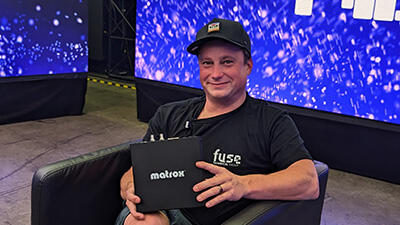
ST 2110 Venue Workflows – Routing, Orchestration, Conversion, and Control
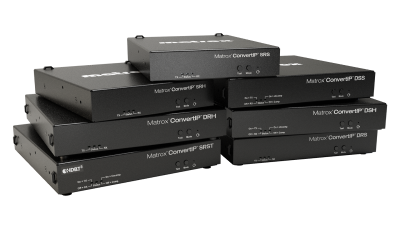
Matrox ConvertIP Series
The show needed ST 2110 hardware with DCI support, along with 12G for monitoring and failover. The Fuse team needed to consider the complete workflow when designing the production system, including signal routing and orchestration, video conversion, and remote control for operators and event technicians.
ConductIP was the first product Fuse purchased after it accepted the project, along with some ConvertIP units and a media server that outputs ST 2110. Fuse uses Matrox ConductIP to route and orchestrate ST 2110 sources on its internal network. Those products served as Middlemiss’ first introduction to the latest Matrox Video hardware and software. Middlemiss was up and routing NMOS signals within four hours — while doing other things at the shop. With the signal management solved, Middlemiss turned his attention to ST 2110 conversion.
Matrox ConvertIP SMTPE ST 2110 Converter: The Star of the Workflow
Fuse deployed 23 Matrox ConvertIP DSS dual-channel SFP SDI-to-IP devices to convert high-resolution SDI from the media servers into ST 2110 and deliver content to the IP video backbone for display on the LEDs. Fuse selected ConvertIP for its support for 12G SDI and 4K (DCI), low latency, and 25G speeds. “When we made an on-site decision to drop the refresh rate to a level that wasn’t supported, Matrox Video stepped up immediately,” Middlemiss said. “Matrox Video actually rewrote the firmware and sent it to us on time, and it worked on the first try.”
“Matrox Video actually rewrote the firmware and sent it to us on time,
and it worked on the first try.”
Remote Operation and Control with Matrox Extio™ 3
The live production system Fuse put together has 30 computers on it, with one programmer and two technicians sitting at their battle stations in the control room handling all the video for the show. Fuse wanted operators to be able to see and control multiple monitors and multiple computers at the same time — all from one remote workstation with one keyboard, mouse, and monitor. Fuse deployed Matrox Extio 3 IP KVM extenders for the operator desks. There are 32 transmitters and 10 receivers, and the Extio 3 makes it possible to move among four computers at once. Operators simply drag the mouse, and the keyboard goes with it.
“Extio 3 empowers the techs and the programmer to be as efficient as possible. It is two times as efficient as extenders that handle dual monitors and four times as efficient as the ones that handle single monitors. When there's no time to spare, that efficiency is incredibly valuable,” Middlemiss said. “There have been zero technical issues with the Extio 3, and the users absolutely love it.”
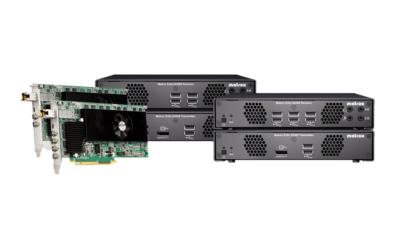
Matrox Extio 3 Series
“There have been zero technical issues with the Extio 3, and the users absolutely love it.”
The Right Expertise and the Right Gear Make for a Successful Project and a Spectacular Show
The capability and performance of Matrox Video IP video products enabled Fuse to realize the vision it had for the workflow, which in turn made it possible to bring the spectacle to life. ConvertIP is feeding ST 2110 video signals to the screens for what is (at the time of this writing) the biggest show on the planet.
“It took five years to build the high-tech concert venue, but we had only five months from the initial contact to deliver a 100% reliable solution in time for the first show — using a standard and workflow we weren’t accustomed to. It was definitely no small feat to do something like in such a compressed timeline,” Middlemiss said.
An Awe-Inducing Spectacle
The first show in Las Vegas’s newest venue debuted in September 2024, and concertgoers were awestruck. So was Middlemiss. "Even after working there so long, I walked in on opening night, and it blew my mind. I wasn't looking at the screen during the opening sequence; I looked at the people to see their reactions. Their jaws were dropping and heads were turning, totally immersed in this environment and trying to take it all in. You don't see that at a typical concert." Credit goes to the performers and the show's content development team, but none of it would have been possible without the technology and the whole team of people behind it.
The biggest winners are the concertgoers, who get the audiovisual experience of a lifetime.
Learn more about these products

SMPTE ST 2110 Converters
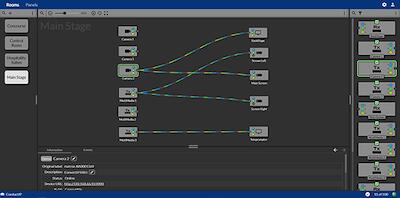
Media Routing Appliance
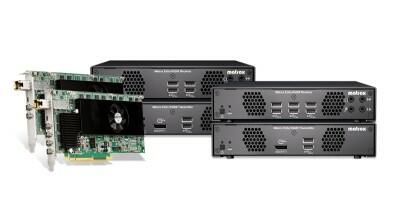
IP KVM Extenders
